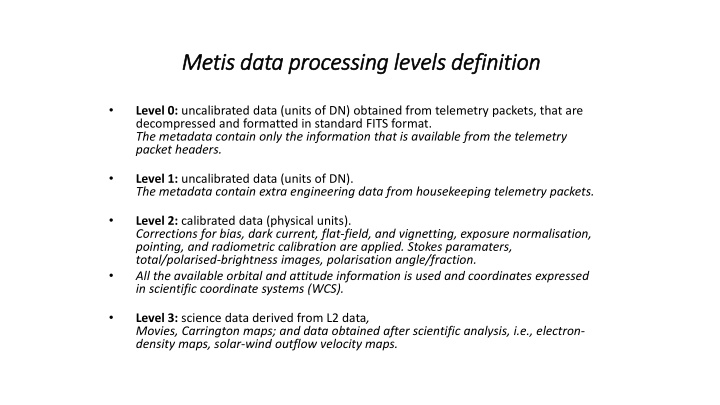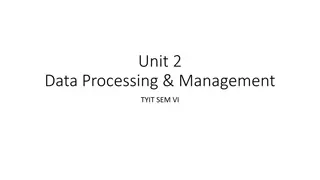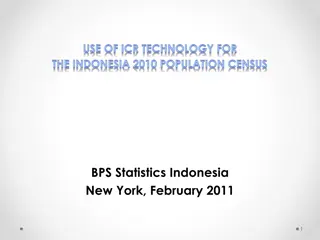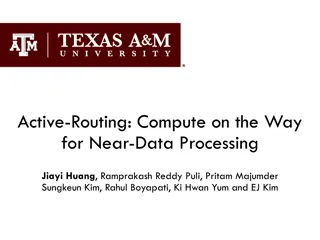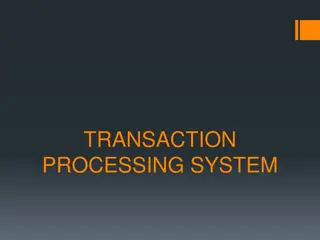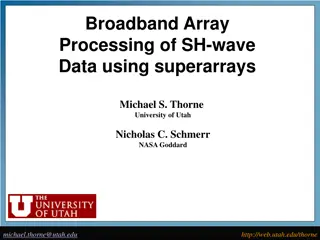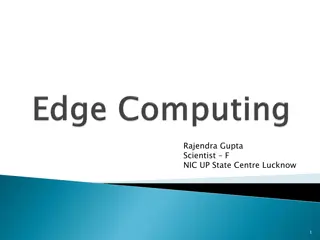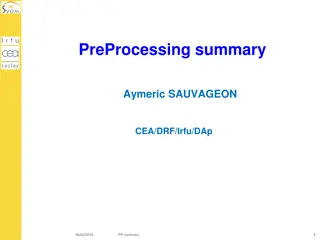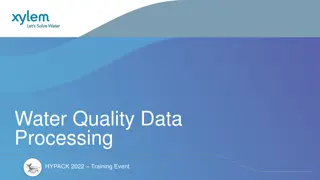Overview of Metis Data Processing Levels and Science Analysis
Metis data processing involves different levels of data calibration and transformation. Level 0 provides uncalibrated data in standard FITS format, while Level 1 includes extra engineering data. Level 2 offers calibrated data with various corrections applied. Level 3 comprises science data derived from Level 2, including movies and maps generated after scientific analysis. The processing of data into these levels ensures accuracy and reliability for scientific research.
Download Presentation

Please find below an Image/Link to download the presentation.
The content on the website is provided AS IS for your information and personal use only. It may not be sold, licensed, or shared on other websites without obtaining consent from the author.If you encounter any issues during the download, it is possible that the publisher has removed the file from their server.
You are allowed to download the files provided on this website for personal or commercial use, subject to the condition that they are used lawfully. All files are the property of their respective owners.
The content on the website is provided AS IS for your information and personal use only. It may not be sold, licensed, or shared on other websites without obtaining consent from the author.
E N D
Presentation Transcript
Metis data processing Metis data processing levels levels definition definition Level 0: uncalibrated data (units of DN) obtained from telemetry packets, that are decompressed and formatted in standard FITS format. The metadata contain only the information that is available from the telemetry packet headers. Level 1: uncalibrated data (units of DN). The metadata contain extra engineering data from housekeeping telemetry packets. Level 2: calibrated data (physical units). Corrections for bias, dark current, flat-field, and vignetting, exposure normalisation, pointing, and radiometric calibration are applied.Stokes paramaters, total/polarised-brightness images, polarisation angle/fraction. All the available orbital and attitude information is used and coordinates expressed in scientific coordinate systems (WCS). Level 3: science data derived from L2 data, Movies, Carrington maps; and data obtained after scientific analysis, i.e., electron- density maps, solar-wind outflow velocity maps.
Metis Data Level Metis Data Level 1. 2. 3. Incoming data are processed into four Levels: from 0 to 3 (see previous slide). Level 2 data are processed with current calibration understanding. Each L2 release comes with a list of known open issues and the recommendation to contact Metis team for support. The first release L2 data are made available as soon as ready to the Metis science community and to Solar Orbiter scientists, for planning and coordination purposes The first release L2 data are made available on a public website after 3 months. All data are reprocessed whenever a new calibration procedure becomes available and immediately released. Each official release has a DOI that people can cite. Previous releases remain available. L3 data will be distributed on a best effort basis together with a processing pipeline 10. Level 0 and 1 data and HK data are made available upon request. 4. 5. 6. 7. 8. 9.
Data Data analysis analysis products products and and tools tools Visible light 1. Images of the Stokes parameters, pB (B units), and polarization angle from polarimetric sequences 2. Maps of electron density (units: 1/cm3) from polarized brightness (inversion using simple spherically symmetric coronal models van de Hulst) 3. CME tools (TBD) UV and visible light 1. HI Lyman-alpha maps (units: photon/cm2/s/sr) 2. Velocity maps (units: km/s) with nefrom VL (point [2]) and with simple Doppler dimming models (e.g., set of only 2 coronal HI profiles, one for streamers, another for coronal holes) Visualization 1. Movies (HI Lyman- and VL) 2. Carrington maps from (HI Lyman- and VL) Language: Python (TBC)
Summary of 7th Metis workshop Synergies with other missions, ground based telescopes and Solar Orbiter payload: Aditya (Banerjee): VL Coronagraph-Spectrometer: 1.1-3 Rs ASO-S (Li): Lya/VL coronagraph 1.1-3 Rs Proba3 (Fineschi): VL coronagraph 1.08-3 Rs PUNCH (DeForest): VL coronagraph/heliospheric Imager 5 45 Rs UVSC (Fineschi): e- temperature form Thomson scattering of HI Lya CODEX (Fineschi) ISS VL coronagraph 3 8 Rs Magnetic field models for PSP (Valori): Connectivity, Magnetic Field extrapolation PHI (Solanki): magnetometer -> glabal magnetic field SPICE (Giunta): CME originators, Off-limb spectroscopy: SW vel. Using OVI lines EUI (Andretta): CME originators, Plume observations at poles Algorithms for STIX (Massa) DKIST (Cauzzi): VL Coronagraph/Spectroscopy K-Cor/UComp (Burkepile): VL Coronagraph/spectroscopy, FOV superposition
Summary of 7th Metis workshop Science: Cosmic rays (Grimani) CMEs: Non-equilibrium ionization effects in CMEs (Pagano) Small scale CMEs, Metis visibility (Zimbardo) CME shock evidence (Frassati) Constraints of models on drag parameters of CMEs (Del Moro) FRIS model flux on rope thermodynamics: Metis,SWA (Mishra) Spectral lines for CME investigations (Rivera) Diagnostics of CMEs (Ying)
Summary of 7th Metis workshop Science: Cosmic rays (Grimani) Full corona Ne models review (1D, 2D and 3D) (Lamy) Full solar cycle on UVCS data, (Giordano) Image enhancement algorithms (DeForest) Flux emergence, Coronal brightness fluctuations during flux emergence (Guglielmino) Blobs in coronagraphic images produced by ricombinations(Papini) Impulsive heating and quasi periodic pulsations in loops (Reale) Flux rope formation (Romano) D3 line polarization measurement (Heinzel)
Topical Teams / Working Groups CMEs, prominence eruptions, shocks, flux emergence Global corona (Ne, NH, V, F-corona, Combined Synoptic maps, image enhancements) Solar Wind Cosmic rays Reconnection, plasma fluctuations Sun-grazing comets Helium measurements
FUTURE SCHEDULE (Launch Feb 2020) 2-4 Dec 19 Dec 19 21-23 Jan 20 2-3 Feb 20 5 Feb 20 Feb-May 20 Jun 20 25 Jun 20 Oct/Nov 20 Info Day + Multi-spacecraft investigations of the inner heliosphere: Italian opportunities, ASI, Roma SVT2 SOWG#15 CP LTP-2 SWT#26 CP MLP-3 Jan-Jun 21 Launch Commissioning Phase First STP for Start CP Mission Commissioning Results Review 8th Metis Workshop (Catania???)
